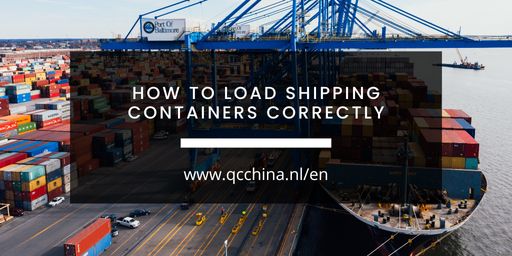
Supply chain management during Chinese New Year 2024
Supply chain management during Chinese New Year 2024 The Chinese New Year in 2024 will pose challenges for Western importers and entrepreneurs. However, with careful..


As a businessperson, you want to be assured that goods arrive at their destination without damage. In this article you find out how to load shipping containers correctly. Foremost, It is always wise to consider any customs checks. Customs will usually check a container if, for example, it shows an incorrect and/or unprofessional load on the X-ray.
For quality inspectors, this is usually a clear sign that there are unusual objects, or hidden spaces in the container. In most cases, this indication causes an extensive check of the container, which in turn leads to all kinds of extra costs and delays.
The most important factors that play a role when loading a shipping container correctly are:
1. Distribution of weight
2. Use of space
3. Compatibility & availability
4. Laws and regulations
A proportional distribution of weight ensures that the shipping container remains in balance during transport. The load is distributed evenly over the entire surface of the bottom.
In addition, heavy products should never be placed above lightweight products. Otherwise, the lightweight products run the risk of being crushed. For example, high-density products should never be loaded next to low-density products, as
this also entails the risk of crushing or damaging the cargo. If the total weight has become too heavy in a certain place, this is compensated with softer material (such as bed linen).
When loading a sea container correctly, the available space in the container is used as efficiently as possible. This means that goods are loaded from wall to wall and any empty spaces can be filled with dunnage material.
Do leave the doors of the container completely free, so that no pressure can arise from the inside. Furthermore, lashing straps can be used to secure the load completely. This way products stay in the right place and are less likely to be damaged.
Make sure that the cargo is loaded evenly over the entire surface of the bottom and prevent it from being piled up from the back. The maximum loading capacity of the sea container may not be exceeded.
It is important that the compatibility and availability of a shipping container both are checked well in advance. Therefore, always make a clear schedule before the products roll out of the factory and can be loaded into the container. This prevents all compatible containers from being rented out or not being available.
The safe transport of goods is always in proportion to the compatibility of the container. It is essential for large, heavy and dangerous loads to be carefully checked beforehand. Think about; volume, weight, size and density of products.
These characteristics largely determine the compatibility of a container. This also applies to other product features such as; solid, liquid, color and even the smell of a cargo can play a role when loading a shipping container correctly.
Nowadays, there are strict laws and regulations for importing products, both within and outside the EU. Especially when loading shipping containers with dangerous loads, it can be wise to call in the help of an external party such as Quality Control China.
Our highly trained inspectors will supervise your products as they are loaded into the shipping container. Several checks such as a Container Loading Check are made to ensure that your products are loaded carefully and correctly.
The compatibility of the container itself is also extensively checked by our inspectors. If everything is approved, the inspector will personally seal the container. If you have any questions about how to load shipping containers correctly? Please feel free contact us!